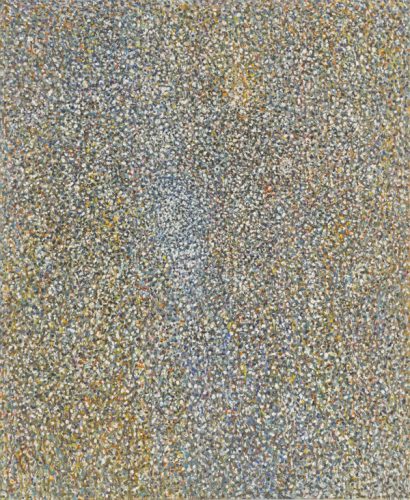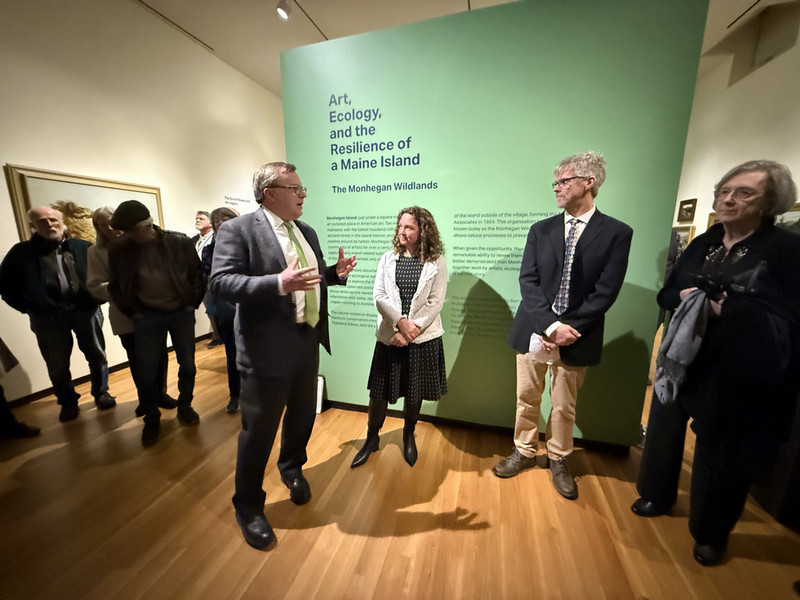Stepping into Color: An Exploration of Richard Pousette-Dart’s Visionary Paintings of Light and Space from the 1960s and early 1970s
By Bowdoin College Museum of Art“My paintings grow as flowers in a garden grow; together, yet in many different directions and ways. I work over and over old paintings, some of my paintings today have twenty or thirty paintings beneath, some more. Sometimes it seems as if I paint just one painting always, from white canvas through an experience of colors and lines and then back to white again, yet always enriched, always different, always including more, always changing, nothing is ever lost. … Everyone needs to adventure to discover his own sensibility and his own form, to begin, no matter how poorly at first, to speak out of his own soul, to make a music of his own sounds, a poem of his own words, a painting of his own lines, colors and forms.” – Richard Pousette-Dart, 1966.

“Meditation on the Drifting Stars,” 1962-63, oil on linen by Richard Pousette-Dart. © 2017 Estate of Richard Pousette-Dart / Artists Rights Society (ARS), New York. Photograph by Kerry Ryan McFate, courtesy of Pace Gallery.
The much-anticipated spring season will bring to the Museum an exhibition that celebrates the beauty and radiance of color. Opening on April 19 and on view throughout the summer, Richard Pousette-Dart: Painting/ Light/ Spaceinvites visitors to immerse themselves in a group of mural-sized canvases by one of the great painters of the New York School. Their surfaces seem dissolved into dabs of paint of jewel-like colors, evoking unlimited expanses of light-filled space. Richard Pousette-Dart (1916–1992) created these works from the late 1950s to the early 1970s, a period of personal and professional success for the artist, but also of social unrest and unprecedented technological advances. By bringing together nine large paintings and several drawings, notebooks, and archival documents, the exhibition offers a rare opportunity to see the work from a vital period in the career of this canonical figure of Abstract Expressionism.

A series of lectures during the exhibition will shed light on Pousette-Dart’s innovation in painting by contextualizing the work in oil and acrylic on canvas within technological developments of modern media. It is intriguing that around 1960 Pousette-Dart abandoned totemic symbols and geometric compositions and instead “atomized” paintings. His pointillist style, which is guided by intuition rather than science, generates meaning with dabs of paint that cover the entire canvas according to an implied set of rules or codes. In a lecture on April 19, scholar Meredith Hoy, Assistant Professor of Art History and Theory at Arizona State University, will consider this paradigm change as a shift from an analogue to a digital aesthetic. Her recent book From Point to Pixel (Dartmouth College Press, 2017) traces the rise of digital art from George Seurat to current computer-based work. It offers a new vocabulary and art historical narrative that provides analytical tools for the reevaluation of Pousette-Dart’s work as well. This summer, Charles Duncan will further reflect on Pousette-Dart’s appreciation of photography and the mechanical medium’s impact on his painterly practice. Later this fall, Sarah Montross, associate curator, deCordova Sculpture Park and Museum, will present a lecture on artists of the 1970s who were influenced by the nascent medium of color TV. Please join us later this month for a reappraisal of Richard Pousette-Dart’s luminous art.



